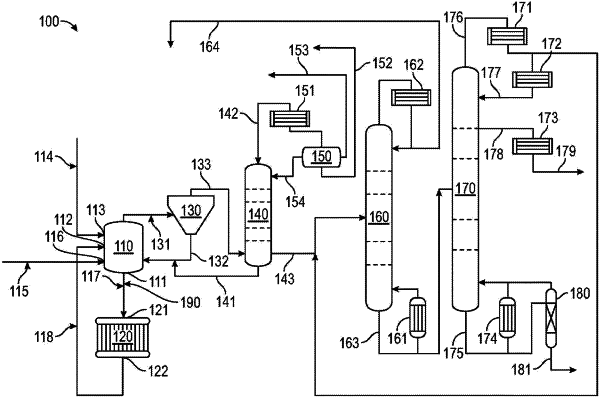| CPC C07C 51/12 (2013.01) [B01J 19/0013 (2013.01); B01J 19/2465 (2013.01); B01J 23/464 (2013.01); C07C 51/445 (2013.01); C07C 51/50 (2013.01)] | 20 Claims |

|
1. A method for producing acetic acid, the method comprising:
contacting a first amount of carbon monoxide with a reactor fluid, in a reactor, in the presence of a carbonylation catalyst, the reactor fluid comprising iodide, less than or equal to 6 wt % water based on the total weight of the reactor fluid, and one or more additives, in-situ generated derivatives of the one or more additives, or combinations thereof at an additive to iodide molar ratio of 0.5:1 to 5:1, under carbonylation conditions sufficient to form acetic acid and an intermediate reaction product comprising methyl acetate, the reactor fluid having a first concentration of methyl acetate, wherein the one or more additives comprise a compound mixture of tri-n-octylphosphine oxide (TOPO), tri-n-hexylphosphine oxide (THPO), dihexylmonooctylphosphine oxide and dioctylmonohexylphosphine oxide;
directing a first stream comprising a portion of the reactor fluid from the reactor to a reactor cooler, the first stream having a first concentration of methyl acetate;
cooling the portion of the reactor fluid received in the reactor cooler for a residence time sufficient to form a cooled reactor fluid having a second concentration of methyl acetate less than the first concentration of methyl acetate;
directing a second stream comprising the cooled reactor fluid from the reactor cooler to the reactor;
contacting a third stream comprising a second amount of carbon monoxide with at least one of the first stream and the reactor fluid received in the reactor cooler;
maintaining an acetic acid evaporation rate in the reactor; and
recovering acetic acid.
|